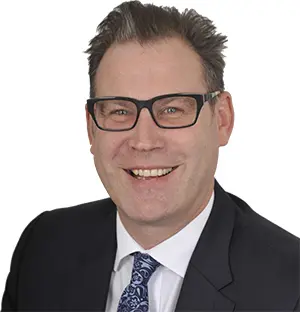When I was about nine, my Dad would spend a great deal of time talking about a plant. The mood at dinner time would be governed by how well the plant was feeling on any particular day, if the plant was “down” then he was, and by proxy we were too. I used to cherish the days when the plant was “up” and also the rare occasions that the plant was “up” all day.

I like to think that I possess a fair amount of emotional intelligence, and I put it down to worrying about a mystical triffid that dominated dinner time discussions in my formative years.
It wasn’t long though before Dad finally took me off with him to work in the summer holidays and I would for the first time come face to face with “The Plant”.
This was the 1970s, and Grundon Waste Management’s first ever sorting plant. It consisted of a single conveyor running through a picking station with drop down shutes leading to three compactors. Dad referred to these as “packers” – another word that, when used in isolation at the dinner table, conjured up images of a canning factory, and I confess to being in a permanent state of confusion as to what my father did for a living.
Recycling was in its infancy in the 1970’s, London was surrounded by huge landfills, and the industry focus was on payloads and packers, vehicles were less about lean burn and more about mean burn, productivity was the key and the more loads you could squeeze into a day the better.
We had seen a niche though. At that time, the waste paper industry was only interested in the huge volumes of waste paper generated from the print factories, while the waste industry was concentrated on everything else. I remember a particular breakfast cereal waste contract caused much consternation every time it changed hands.
No-one was paying much attention to what was in the bins they collected and no-one really noticed how much packaging waste was starting to creep into the general waste bins.
Removing this packaging was the tricky part, hence the plant, and it was costly. Everything had to be charged above landfill rates just to cover the sorting and electricity costs, but our customers loved it.
For the first time, they could physically see what their stock reports were telling them manually, realising what didn’t sell helped to concentrate their minds far more than any boardroom graph.
All too often the waste industry undersells itself, but we saw this as a valuable tool and, in all the time that GWM has been recycling waste, we have always charged for the service.
In the early days I am sure that most of these fees were just to maintain matrimonial harmony, an occasional holiday paid for by Dad to make up for him being more wedded to the plant than my mother.
Forty-five years later however, we can tell to the last auto sorter, three dimensional screen, or tonne of baling wire what each tonne of waste has cost us to process, and quite frankly the difference between what we charge and what it costs is negligible.
The only explanation for this gradual erosion of margins is the rapid transformation of our industry from one of haul and dump, to transport, treat and dispose.
To some degree, I think we’ve probably forgotten to charge for the middle bit, which is surprisingly silly as this is the bit that interests our customers the most. There is nothing more powerful than the ability to offer a customer the chance to see their own waste traveling along a sorting line.
Their most frequent reaction is one of awe, followed by “is that all ours?” as they realise that their “paperless” office is nothing of the sort (no pun intended).
For us, it’s an ongoing education campaign, encouraging more of our customers – from multi-nationals to corner stores – to recognise the benefits of segregation for easy recycling and reprocessing.
Yes, it will sometimes be an uphill battle that doesn’t always seem to make economic sense, but sometimes reputation and a big tick in the green credentials box is more important.
And spare a thought for this writer, who grew up in the shadow of a triffid and now follows in his father’s footsteps by putting the plant centre stage of many a daily conversation.
